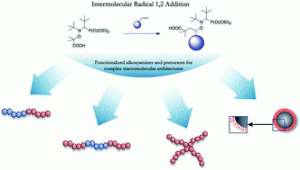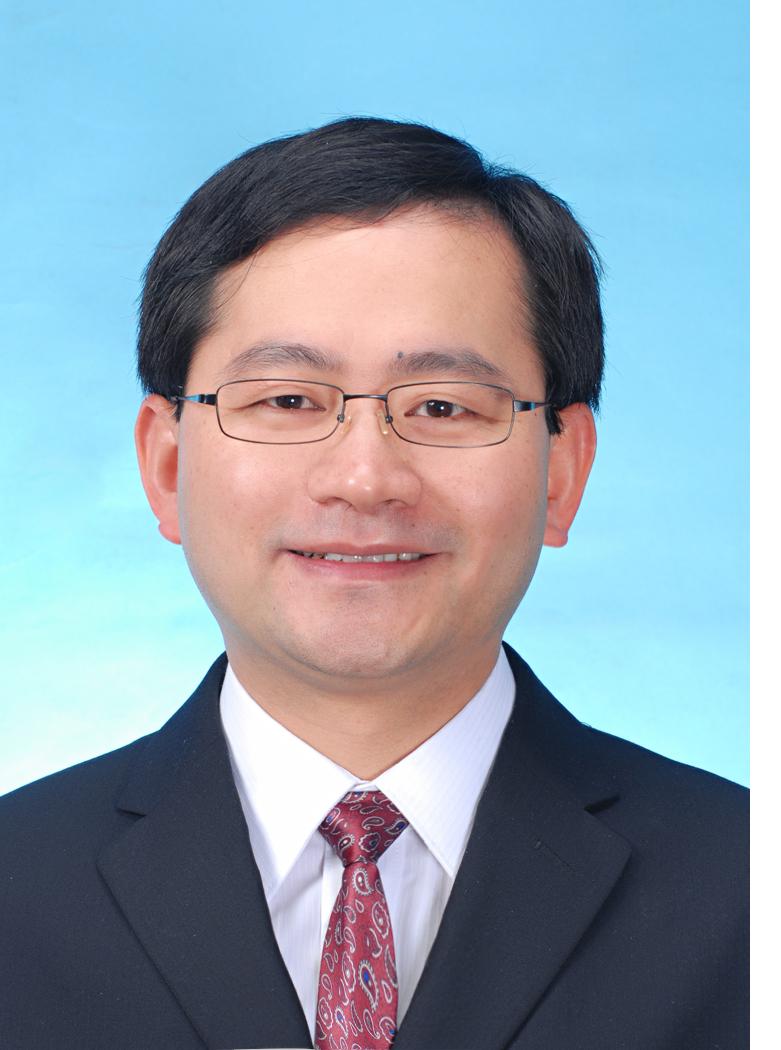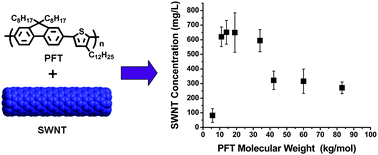 Eric Drockenmuller was born in 1973 in Thionville (France), and received his PhD degree in 2002 from the University of Strasbourg (France) after working on nitroxide-mediated radical polymerization. He undertook a two years postdoctoral position with Prof. C. J. Hawker (IBM Almaden Research Center, California, USA) and Prof. T. P. Russell (University of Massachusetts, Amherst, USA) working on the synthesis and functionalization of nanostructured materials. He was appointed Assistant Professor in 2004 and full Professor in 2011 at the University of Lyon 1 (France). Since October 2010 he has been a junior member of the “Institut Universitaire de France” (IUF).
Eric Drockenmuller was born in 1973 in Thionville (France), and received his PhD degree in 2002 from the University of Strasbourg (France) after working on nitroxide-mediated radical polymerization. He undertook a two years postdoctoral position with Prof. C. J. Hawker (IBM Almaden Research Center, California, USA) and Prof. T. P. Russell (University of Massachusetts, Amherst, USA) working on the synthesis and functionalization of nanostructured materials. He was appointed Assistant Professor in 2004 and full Professor in 2011 at the University of Lyon 1 (France). Since October 2010 he has been a junior member of the “Institut Universitaire de France” (IUF).
Please follow the links for further information on Eric’s laboratory and his recent paper in Polymer Chemistry.
What was your inspiration in becoming a chemist?
Among science topics chemistry has always been my favourite as it is very visual and requires a good memory to assimilate all different reactions and mechanisms. I converged to polymer and materials chemistry after attending an invited seminar which made me realize how important they are in our daily life. I always liked building up things starting from scratch or basic building blocks, like a fancy lego game for grown-ups. I appreciate very much the creativity and interactions involved in the daily life of a researcher in polymer chemistry.
What was the motivation behind the research in your recent Polymer Chemistry paper? (DOI: 10.1039/c0py00251h)
As a polymer chemist I thought that if matching functionalities were found at polymer chain-ends and at a substrate’s surface, things would easily result in surface functionalization. After initiating a fruitful collaboration with Profs. Liliane Léger and Yves Grohens I realized that physics needed to be considered more carefully. Therefore together we pushed beyond our knowledge of the grafting of poly(ethylene glycol) brushes to silicon substrates using click chemistry.
Why did you choose Polymer Chemistry to publish your work?
We were invited to contribute to a special issue guest edited by Rachel O’Reilly and Andrew Dove in this new promising journal.
In which upcoming conferences may our readers meet you?
I will attend the Aquitaine conference in Bordeaux (France) next October, the EUPOC conference in Doha (Qatar) in January 2012. I also have the honour to co-organize a symposium at the IUPAC 2012 conference together with Profs. Craig Hawker and Axel Muller in June 2012.
How do you spend your spare time?
Besides movies, gigs or travels, I have practiced skateboard since I was 16 and go to the Lyon indoor skatepark with my son every Friday night (when I’m not injured as I’m getting old).
Which profession would you choose if you were not a scientist?
I always dreamt of being a professional skateboarder.

















